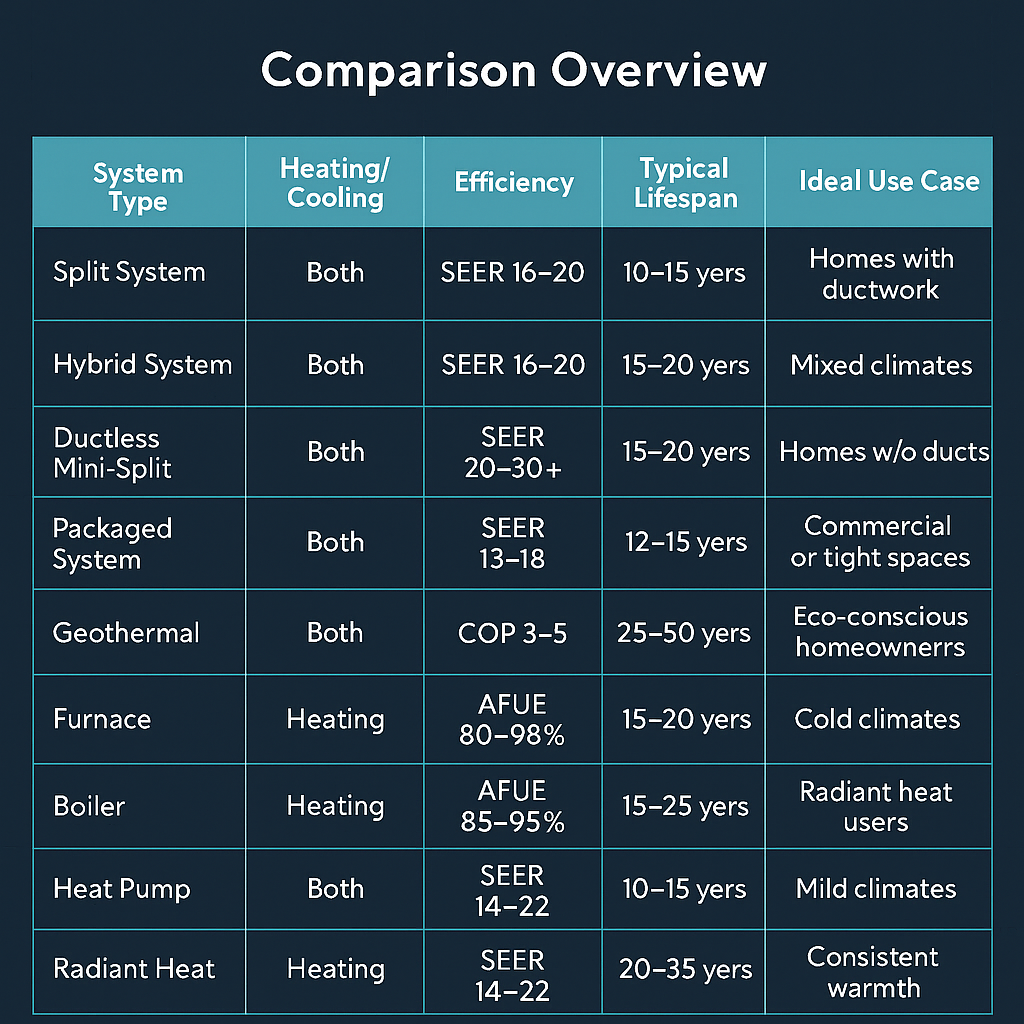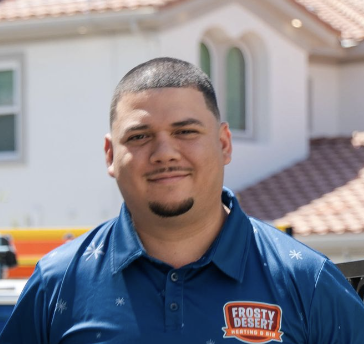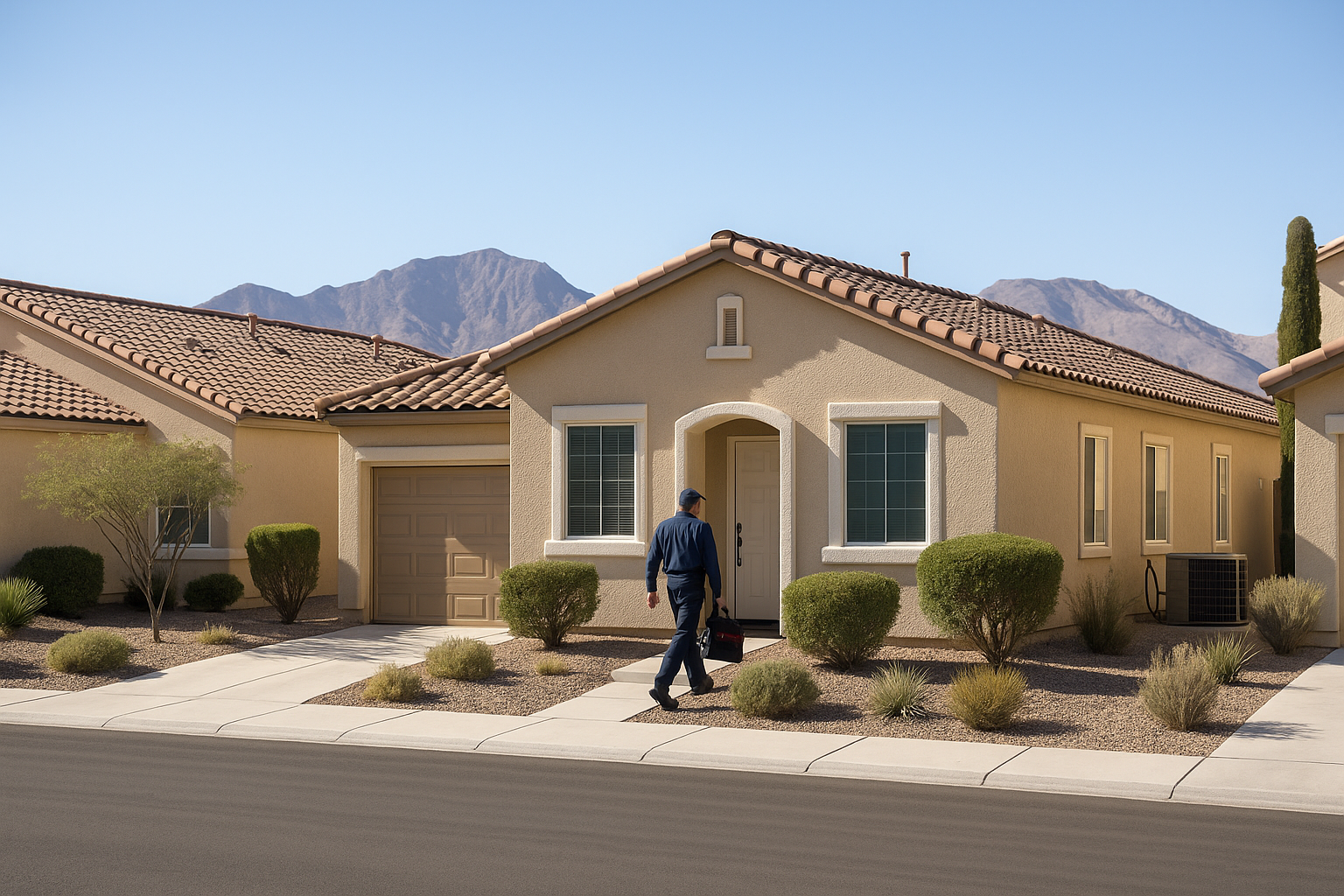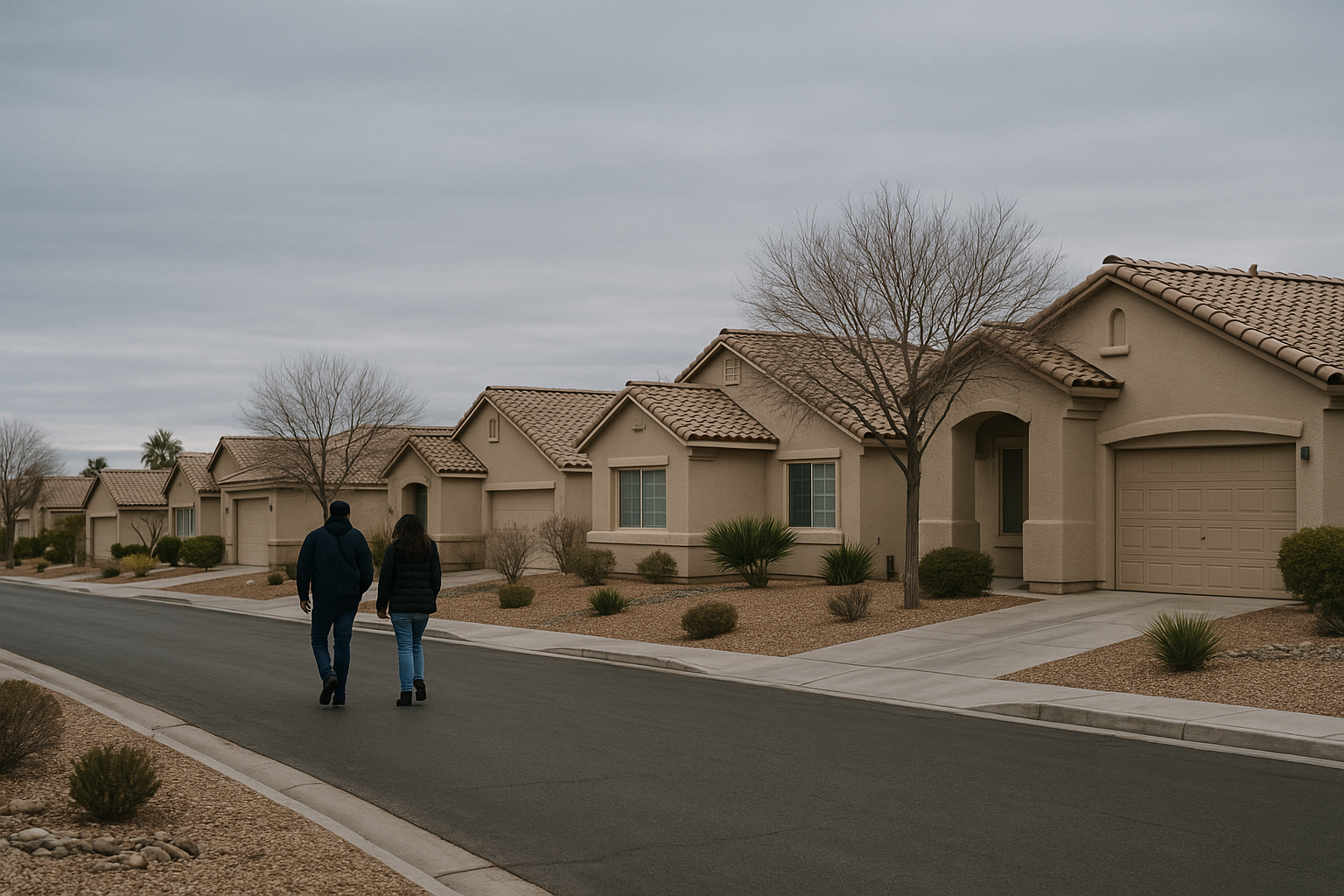The Complete Guide to HVAC Systems: Types, Efficiency, and Choosing the Right One for Your Home

The Complete Guide to HVAC Systems: Types, Efficiency, and Choosing the Right One for Your Home
Meta Description:
Explore the different types of HVAC systems, including split, hybrid, ductless, geothermal, and more. Learn how each system works, compare costs and efficiency ratings, and find out which heating and cooling option best fits your home.
Understanding HVAC Systems
Your HVAC (Heating, Ventilation, and Air Conditioning) system is the backbone of year-round home comfort. It keeps your space cool in the summer, warm in the winter, and ensures indoor air quality stays healthy. But not all HVAC systems are the same — each type has distinct advantages, installation requirements, and long-term costs.
Choosing the right system depends on factors such as home size, climate, energy efficiency goals, and whether your home already has ductwork. Below, we’ll break down the main HVAC system types, their key components, efficiency data, and how to choose the one that’s right for you.
1. Split Systems (Heating & Cooling)
Overview:
Split systems are the most common HVAC configuration in U.S. homes. They consist of two units — an outdoor condenser/compressor and an indoor air handler or furnace.
How It Works:
- The outdoor unit expels heat absorbed from inside the home.
- The indoor unit circulates air through ducts to maintain consistent temperatures.
Efficiency Data:
- Typical lifespan: 10–15 years
- Average cost: $7,000–$12,000 installed
- Recommended SEER rating: 16+ for cooling efficiency
Best For:
Homes with existing ductwork that need reliable year-round heating and cooling.
2. Hybrid Split Systems
Overview:
A hybrid split system combines a heat pump with a traditional gas furnace, automatically switching between electricity and gas for maximum efficiency.
Efficiency Data:
- Energy savings: Up to 30% lower utility costs compared to standard systems
- Ideal SEER: 16–20; HSPF: 9+
- Lifespan: 15–20 years
Best For:
Regions with mild winters but occasional freezing temperatures — offering flexibility and reduced operating costs.
3. Ductless Mini-Split Systems
Overview:
Ductless or “mini-split” systems provide zoned heating and cooling without requiring ducts. Each indoor unit controls the temperature of a specific room or zone.
Efficiency Data:
- SEER ratings: 20–30+ (extremely efficient)
- Average cost: $4,000–$8,000 per zone
- Lifespan: 15–20 years
Best For:
Homes without existing ductwork, room additions, or spaces where central air installation isn’t practical.
Key Advantage:
Individual temperature control and reduced energy waste — up to 25–30% energy savings compared to traditional systems.
4. Packaged Systems
Overview:
Packaged systems combine all components — compressor, coils, and air handler — into one outdoor unit, usually installed on the roof or beside the building.
Efficiency Data:
- SEER ratings: 13–18
- Lifespan: 12–15 years
- Average cost: $8,000–$11,000 installed
Best For:
Commercial properties or homes with limited indoor space for HVAC equipment.
5. Geothermal Systems
Overview:
Geothermal HVAC systems use the earth’s stable underground temperature to heat and cool your home through a system of buried pipes called ground loops.
Efficiency Data:
- Efficiency improvement: Up to 70% more efficient than conventional systems
- Average cost: $18,000–$30,000 installed
- Lifespan: 25+ years for indoor components, 50+ years for ground loops
Best For:
Homeowners seeking long-term savings, sustainability, and energy independence.
6. Furnaces
Overview:
Furnaces generate heat using gas, oil, propane, or electricity and distribute it through ductwork.
Efficiency Data:
- AFUE (Annual Fuel Utilization Efficiency): 80–98%
- Lifespan: 15–20 years
- Average cost: $4,000–$8,000 installed
Best For:
Cold climates requiring strong, consistent heat output.
Fuel Options:
- Natural gas: Most common and cost-effective
- Propane or oil: For rural areas without gas lines
- Electric: High-efficiency but higher operating cost
7. Boilers
Overview:
Boilers heat water instead of air, distributing warmth through radiators, baseboards, or radiant floors. They provide even, draft-free heat.
Efficiency Data:
- AFUE: 85–95%
- Lifespan: 15–25 years
- Average cost: $8,000–$15,000 installed
Best For:
Homes seeking steady, quiet heating and better humidity retention.
8. Heat Pumps
Overview:
Heat pumps transfer heat rather than generate it, working as both a heater and air conditioner.
Types of Heat Pumps
- Air-Source: Transfers heat between indoor and outdoor air (most common).
- Ductless Mini-Split: Ideal for zoned heating and cooling.
- Hybrid (Dual-Fuel): Pairs with a furnace for efficiency in cold weather.
Efficiency Data:
- SEER: 16–22 | HSPF: 8.5–10
- Lifespan: 10–15 years
- Average cost: $6,500–$12,500 installed
Best For:
Moderate climates where winters are mild and summers are warm.
9. Radiant Heating Systems
Overview:
Radiant heating warms floors, walls, or ceilings directly — no ductwork needed. It provides consistent comfort and eliminates airborne dust.
Efficiency Data:
- Energy savings: Up to 15% lower heating bills compared to forced air
- Lifespan: 20–35 years
- Average cost: $10–$20 per square foot installed
Best For:
Homes seeking quiet, allergen-free, evenly distributed warmth.
10. Central Air Conditioning
Overview:
Central AC systems use ducts to distribute cooled air throughout the home. They’re efficient, clean, and improve air quality with modern filtration.
Efficiency Data:
- SEER: 14–22+
- Lifespan: 12–17 years
- Average cost: $5,000–$10,000 installed
Best For:
Homes with existing ductwork looking for efficient, whole-home cooling.
11. Water Heaters (as Part of Home Comfort Systems)
Overview:
Water heaters provide hot water for everyday use and, in some cases, support hydronic heating systems.
Types
- Tank (Storage): 30–80 gallons, affordable but less efficient.
- Tankless (On-Demand): Heats water only when needed, saving up to 30% in energy costs.
- Electric Heat Pump Water Heater: Combines water heating with heat pump technology for top efficiency.
Efficiency Data:
- Lifespan: 8–15 years
- Average cost: $1,500–$4,000 installed
12. Comparison Overview

How to Choose the Right HVAC System
When selecting a system, consider these factors:
- Home Size & Layout – Larger spaces need higher capacity; small homes may benefit from ductless options.
- Local Climate – Cold regions favor furnaces or dual-fuel systems; warmer climates favor heat pumps.
- Energy Efficiency Goals – Higher SEER or AFUE ratings cost more upfront but save thousands over time.
- Existing Infrastructure – Homes with ducts suit split or hybrid systems; homes without ducts fit mini-splits.
- Budget & Longevity – Compare upfront costs vs. expected lifespan and operating expenses.
Final Thoughts
No single HVAC system fits every home. The right choice depends on your home’s design, your comfort needs, and your energy goals. Split systems remain the most common nationwide, while ductless and geothermal systems continue gaining popularity for their efficiency and flexibility.
By understanding each option’s strengths and costs, you can make a smart investment that keeps your home comfortable and your energy bills low for years to come.




